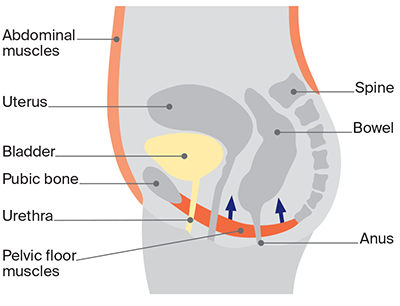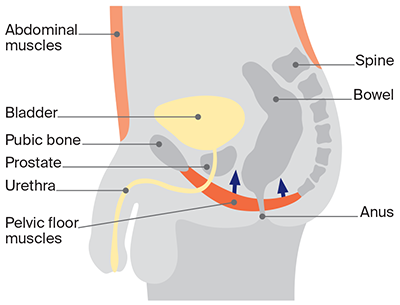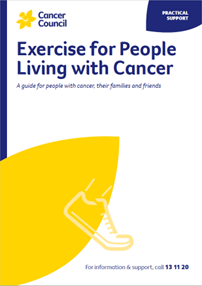- Home
- About Cancer
- Managing side effects
- Sex, intimacy and cancer
- Overcoming specific challenges
- Incontinence
Incontinence
Learn about the challenges of incontinence after cancer treatment, its impact on sexual health, and effective management strategies.
Learn more about:
Overview
Trouble controlling the flow of urine or pee (urinary incontinence) or bowel movements (faecal incontinence) is a common side effect after treatment for cancer of the prostate, bladder, bowel and penis, or the female reproductive organs. Incontinence may be temporary or permanent.
The pelvic floor muscles, which affect bladder and bowel control, can also affect sexual function and arousal. Sometimes pelvic floor muscles can become too tight (hypertonic pelvic floor), which may make it harder to fully empty the bladder and bowel.
Having bladder or bowel issues can be embarrassing for your sex life, but there are ways to manage them. Ask your GP for a referral to an accredited pelvic health physiotherapist for advice.
You can find a list of health providers at choose.physio/find-a-physio and continence.org.au. Or call Continence Health Australia on 1800 33 00 66 for help.
Tips for managing bladder and bowel issues
- Talk to your partner about the incontinence.
- Wait at least 2–3 hours after a meal, and empty your bowel and bladder before having sex.
- After prostate surgery, try sex with you on the bottom and your partner on top.
- Use thick towels, washable blankets or sheets that wick moisture away. A waterproof mattress protector may help you feel less anxious.
- If you have a catheter for draining urine, tape the tube to your skin, remove the bag and insert a flow valve or stopper before sex. If the catheter is in the penis, fold it back against the penis and cover it with a condom to hold in place. Make sure there’s enough catheter tube for the penis to extend.
- Talk to a continence nurse about using plugs for your rectum if you have trouble with faeces (poo) leaking.
How to exercise your pelvic floor muscles
To find your pelvic floor muscles, try stopping your flow of urine for a couple of seconds while emptying your bladder. You use your pelvic floor muscles to do this. You need to do pelvic floor exercises several times a day. The technique is the same for males and females.
Female

Male

Video: How to exercise your pelvic floor muscles
The technique is the same for men and women (see the images above and watch video below).
- First, relax all of your pelvic floor and belly or stomach (abdominal) muscles.
- Gently lift your pelvic floor muscles up and hold while you continue breathing normally. Keep your upper abdominal muscles relaxed. Try to hold the contraction for up to 10 seconds. Relax your muscles slowly after each hold.
- Repeat this exercise up to 10 times. Rest for 10–20 seconds between contractions. Relax your pelvic floor muscles completely during the rest periods.
→ READ MORE: Changes in appearance
More resources
Dr Michael Lowy, Sexual Health Physician, Sydney Men’s Health, NSW; Gregory Bock, Clinical Nurse Consultant – Oncology Coordinator, Urology Cancer Nurse Coordination Service, Cancer Network WA; Anita Brown-Major, Occupational Therapist and Director, Thrive Rehab, VIC; Helena Green, Psychosexual Therapist and Clinical Sexologist, Insync for Life Psychology and Women Centre, WA; Dr Lisa Mackenzie, Clinical Psychologist, HNE Centre for Gynaecological Cancer, Hunter New England Local Health District, NSW; Dr Tonia Mezzini, Sexual Health Physician, East Obstetrics and Gynaecology, SA; Sophie Otto, Prostate Cancer Nurse Consultant – Central Adelaide Local Health Network (CALHN), SA; Giovanna Raco, 13 11 20 Consultant, Cancer Council Victoria; Kath Schubach, Urology Nurse Practitioner, VIC; Emily Stevens, Gynaecology Oncology Clinical Nurse Consultant, Southern Adelaide Local Health Network, Flinders Medical Centre, SA; Anja Vukovic, Clinical Specialist Social Worker, Gynaecological Oncology, Westmead Hospital, NSW; Alan White, Consumer; Kathleen Wilkins, Consumer; Merran Williams, Consumer.
View the Cancer Council NSW editorial policy.
View all publications or call 13 11 20 for free printed copies.

